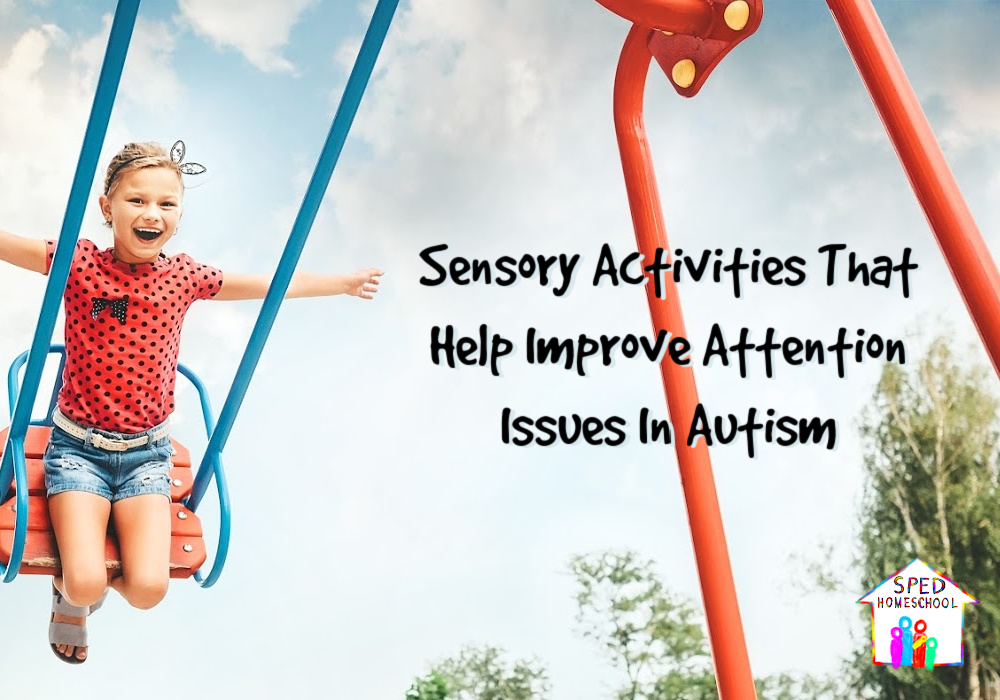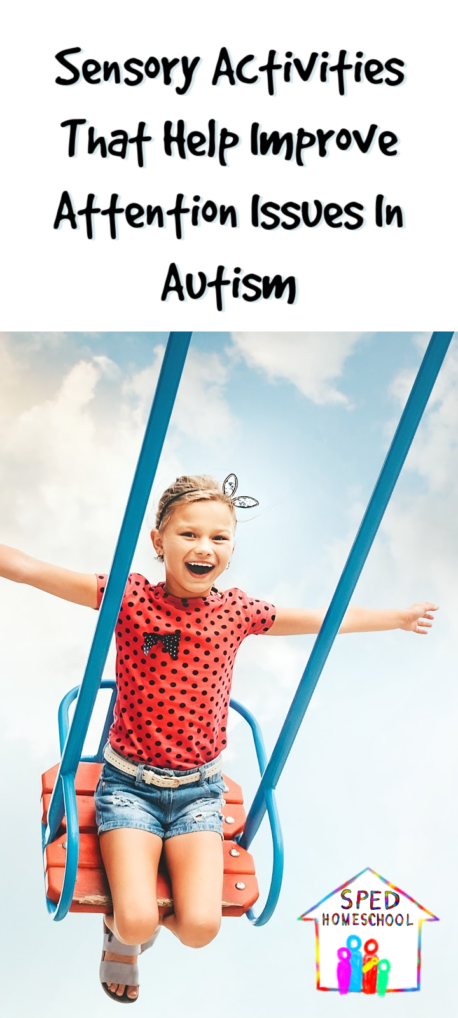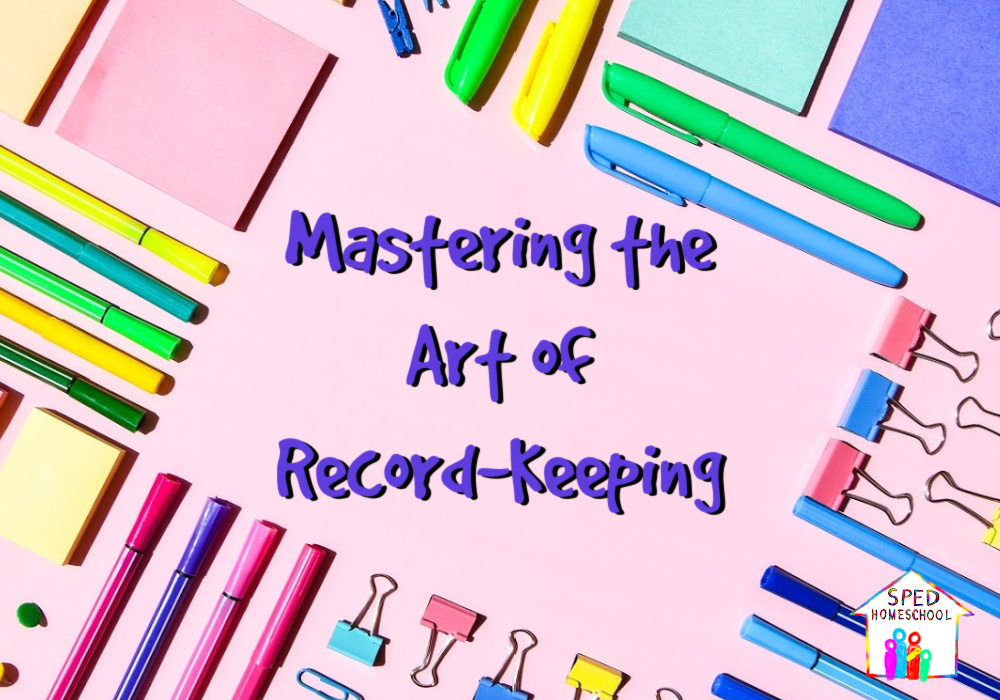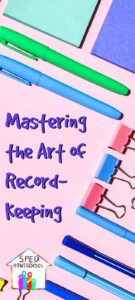
by Penny Rogers, SPED Homeschool Blogging Partner
When it comes to the overall sensory system, vestibular and proprioceptive inputs play a huge role in its function. Without understanding them, most kids have issues that are passed off as something else and not treated, which can cause problems later in life.
Perhaps you’ve identified these sensory issues in your child and are looking for activities to improve their overall attention. Keep reading to find out what vestibular and proprioceptive inputs are as well as activities to help with sensory processing.
What is Vestibular Input?
Without sounding too encyclopedia-ish, vestibular input is the sensation caused by any change in position (direction or movement) of the head. This sensory system is made up of canals filled with tiny hairs and a bit of fluid. When our head moves, the fluid acts as triggers that, when touched by the hair, then become receptors that tell the brain we’re moving.
Children seeking vestibular input will constantly be on the move because they want to max it out, so to speak. These children climb super high, spin, swing, and hang upside down.
Vestibular input is important because it also affects other areas, such as visual-motor skills and body awareness.
What is Proprioceptive Input?
Proprioceptive input is the sensation gained by body awareness through the movement of joints, muscles, and connective tissues. Think in terms of pushing, pulling, and lifting heavy objects. This connects with vestibular input by making the body aware of where it is in space.
Proprioceptive input has a role in self-regulation, posture, body awareness, coordination, speech, and the ability to focus. While this input can be calming for some, many autistic children seek this input to regulate their emotions.
On the other side, some children are over-responsive to proprioceptive input and avoid certain kinds of activities. By now, you can see how these two inputs work together and deserve attention for the child who experiences challenges.
Indicators for Children Seeking Vestibular & Proprioceptive Inputs
Vestibular-Seeking Input Indicators
For children seeking this kind of input, they are fixated on certain movements because their brain under-processes vestibular input. Signs of this are:
- Never getting dizzy.
- Always running and moving.
- Frequently spinning.
- Climbing extremely high
Indicators for Proprioceptive-Seeking Input
This kind of input can be alarming to children who are overwhelmed by sensory stimulation. In essence, you may see some of the signs listed below;
- Biting or chewing on objects.
- Enjoys playing roughly.
- Likes to sit with knees tucked.
- Toe walks.
- Bangs body part.
Activities for Enhancing a Child’s Vestibular & Proprioceptive Input
These inputs can be worked simultaneously or individually. In most cases, these activities can act as a calming technique and be stimulating and arousing. The best way to gauge what your child needs is to pay attention to how they respond to the activities.
Modify them as you see fit. And although some suggestions are being provided for you below, don’t hesitate to create your own.
Vestibular Input Activities
- Rocking on a yoga ball.
- Practice yoga techniques.
- Pretend to row in a boat (rocking back and forth).
- Skipping.
- Galloping.
- Running.
- Jumping rope.
- Handstands with feet against the wall.
- Cartwheels.
- Jumping on a trampoline.
- Roller skating.
- Riding a bike.
Proprioceptive Input Activities
- Crawling. (weight-bearing)
- Push-ups. (weight-bearing)
- Playing tug-of-war (pushing and pulling). (resistance)
- Carrying boxes or books. (heavy lifting)
- Running. (cardiovascular)
- Blowing bubbles. (oral)
- Tight hugs. (deep pressure)
When should you do these activities?
If you have identified your child’s triggers, you can begin an activity before they show signs of anxiousness or distress. Incorporate the activities naturally into the child’s schedule to help keep the flow of other activities already established.
Give your child cues they can use to help identify when they may need to do an activity. Consider labeling it something as simple as a “calming activity” and provide a visual support cue as well. A visual reminder can be used to point out a particular activity your child wants to do.
When it comes to how often these activities should be done, it will depend on the sensory need of the child. Regardless, the activities do not need to be long as short activities can be the most beneficial. Activities can last anywhere from 30 seconds to a couple of minutes.
It may be hard, in the beginning, to figure out what activities your child needs. Whatever you do, be sure to include your child’s suggestions and keep trying until you find what works.
Penny blogs over at Our Crazy Adventures In Autismland. Based on her personal experiences with autism, she educates autism families on how to navigate their world from diagnosis to adulthood. She offers real-life advice and ideas through her blog by providing homeschool printables, at-home therapy techniques, ebooks, and DIY posts. You can also follow her adventures on Twitter , Instagram, Facebook, or in her group, Life In Autismland.
Also, check out this YouTube video on Penny’s channel for additional information on this subject.







